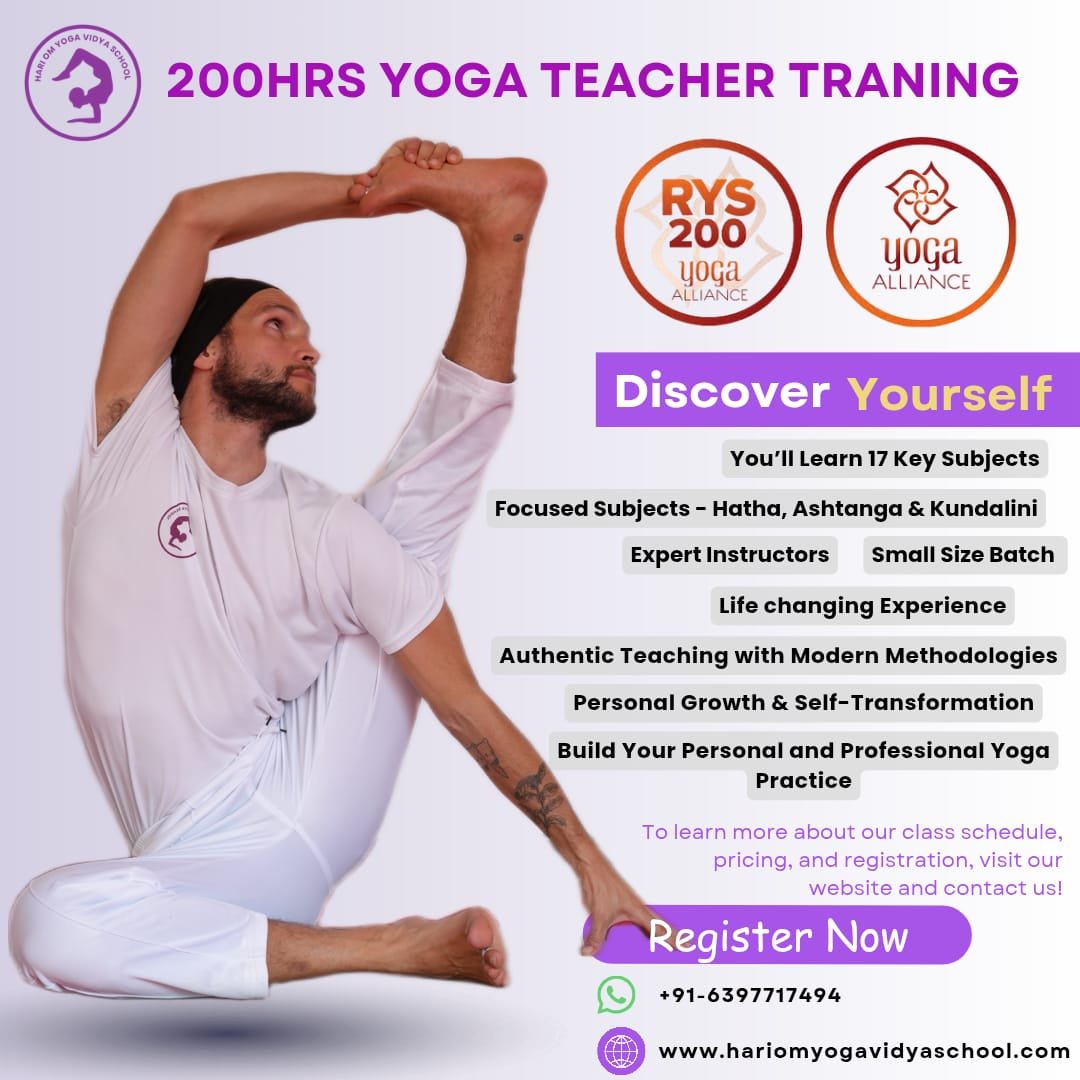Dandassana – Staff Pose
What is Dandassana?
Dandassana is a beginner level pose, which you can practice very easily. It is mainly called a seater pose. You have to sit straight with your feet pointing forwards, with legs stretched. You have to maintain a great deal of awareness while sitting in pose. If you want to develop mindfulness and more focus, then you should practice Dandassana.
It is a pose which makes way for more advance seated poses. The name of the asana has come from the Sanskrit texts. In Sanskrit,
- Danda means ‘stick’, and
- Asana means ‘pose’.
You can also call it as the staff pose. The staff also resembles the spinal cord. It also serves as the pathway for energy movement. Dandassana also helps one to connect to all the three bandhas, Mula bandha, Uddhiyana bandha and Jalandhara bandha.
Read More: Why Is Kundalini Yoga Dangerous? The Truth About Its Risks and Rewards
How To Do the Dandassana?
You can do the Dandassana pose quite easily, as it is a base asana, that prepares the body for more advanced poses. Follow the steps below, to do the asana with ease.
- You have to sit on the mat, with your spine straight and legs pointing forward, outstretched.
- You can place both your hands on both sides of the hips, slightly behind the body. This will provide the shoulders with some relaxation, while supporting the spine.
- You have to ensure to sit on the sitting bones in your buttocks. You have to press the thighs against the floor, while rotating them towards one another a little, while keeping the abdomen in comfortable position.
- The feet must be flexed and straightened to full capacity, with the fingers facing outwards.
- Now, you have to lengthen the spine and also the legs muscles.
- Your ankles should also be flexed outwards, while you press the heels into the floor. After you are done with this, you have to lift your rib cage, your sternal plate and also expand the clavicles.
- This is how you have to sit. Your gaze has to be fixed forward, and you have to maintain the pose for atleast a minute. You can increase the time slowly, if you start feeling more comfortable in the pose.
- You can relax slowly, and breathe gently, while going back to your original position. You can also go back to the cross-legged posture.
Modifications of Dandassana
- If your hamstrings are tight, your thigh’s mobility may be restricted. So, you can also perform the pose, by keeping sandbags on the thighs, while performing the pose.
- You can also place a folded blanket or a block beneath the sitting bones, as the elevated pose will help you to accomplish and maintain the pose with relative ease.
- If you are having issues with the alignment, in that case, you can rest your back, against a wall. Your body parts, sacrum and the scapulae should be touching the wall. You can also try placing a rolled towel between the wall and the lumbar region, to avoid contact.
Variations of Dandassana
You can do the Dandassana pose, by keeping the feet slightly apart, and also with your hands stretched upward.
Although the asana may look simple from a distant. If you are not breathing in a correct manner, it can affect the practice. The sequence of breathing is inhale-exhale-inhale-exhale. When you inhale, the focus is on the sitting bones in the buttocks, and during exhalation, the focus should be on the abdominal muscles. You can gaze at the tip of your nose, called Nasagra Drishti.
Safety Precautions Decoded
- You can try out some of the preparatory poses, like Palm tree pose, or Tadasana, Standing forward bend or Uttanasana, and Adho Mukh Svanasana or downward dog pose, before doing this pose.
- When you are practicing this pose, you have to make sure that the legs do not sway outwards. You have to ensure to keep them straight.
- You should not put much strain on the spine, thighs, and or any other critical body part.
- Do not exert excessive pressure on the body muscles.
- If you are a beginner, but have a strong composition, you can do this pose at any time.
- Avoid eating before practice. When you are performing Dandassana, you are engaging the abdominal muscles, which can affect digestion.
- You also need to ensure that you spread the body weight on both hips. Excess pressure on any one could lead to sprain.
Who Can Do This Asana and Who Cannot?
- If you are of a healthy body constitution, without any injuries in your legs or thighs, you can do this pose for as long as you want.
- If you have sciatic nerves, then you should avoid the intense stretches in Dandassana. But you can go for mild stretching.
- If you have some kind of back or wrist injury, you must not do the pose.
Benefits of Dandassana
- When you continuously practice the pose for a long time, you will slowly develop awareness, and focus. When you are aware, you are able to control every bit of the placement of the body parts and are capable of equally distributing the body weight on bother buttocks.
- The pose helps in the expansion of the supper body and the lower body as well. It also stretches and tones the back muscles.
- As you practice this asana, it can lead to grounding. You can balance the disturbed root chakra. This asana will help you to restore the natural shape of the spine, hips, and legs.
- The main aim of the asana, is to keep the body perpendicular to the floor. It requires a lot of strength and stamina, while doing so. So, it builds flexibility in the hip extensors and the pelvic muscles.
- This pose also helps to strengthen the pelvic floor muscles. Apart from that, the blood flow also improves. Women who have just had a delivery can practice this asana to strengthen their lower abdomen area.
- By the regular practice of this asana, you can also improve the functioning of the Sciatic nerves.
- The asana also opens up the chest cavity, so it is just perfect for your respiratory cure.
Read More: Everything You Need to Know About Kundalini Yoga Teacher Training
During the practice of this pose, the spine is completely erect. So, the prana can flow through the body quite easily. Your blocked chakras also open up.
Deepen Your Yoga Practice with Hari Om Yoga Vidya School
Located in the heart of Rishikesh, Hari Om Yoga Vidya School is a place where ancient yogic wisdom meets modern teaching techniques. As a top yoga school in Rishikesh, we are committed to providing authentic, immersive yoga education in a peaceful, spiritual setting. Recognized as one of the best yoga schools in Rishikesh, we offer structured training programs designed to help you evolve in your practice, whether you are a beginner or an experienced yogi.
If you’re searching for a yoga school in Rishikesh that focuses on holistic learning, experienced teachers, and a supportive community, look no further!
Explore Our Yoga Teacher Training & Retreats
At Hari Om Yoga Vidya School, we offer a range of courses tailored for different levels of practitioners:
✅ 100-Hour Yoga Teacher Training in Rishikesh – A foundational course for those looking to begin their yoga journey.
✅ 200-Hour Yoga Teacher Training in Rishikesh – An internationally recognized certification for aspiring yoga teachers.
✅ 300-Hour Yoga Teacher Training in Rishikesh – Advanced training to deepen your practice and refine your teaching skills.
✅ 7-Day Yoga Retreat in Rishikesh – A rejuvenating escape into yoga, meditation, and self-discovery.
✅ 10-Day Yoga Retreats in Rishikesh – A transformative experience that blends yoga, relaxation, and Himalayan serenity.
Join us for a life-changing experience and become part of our global yoga family! 🌿✨






